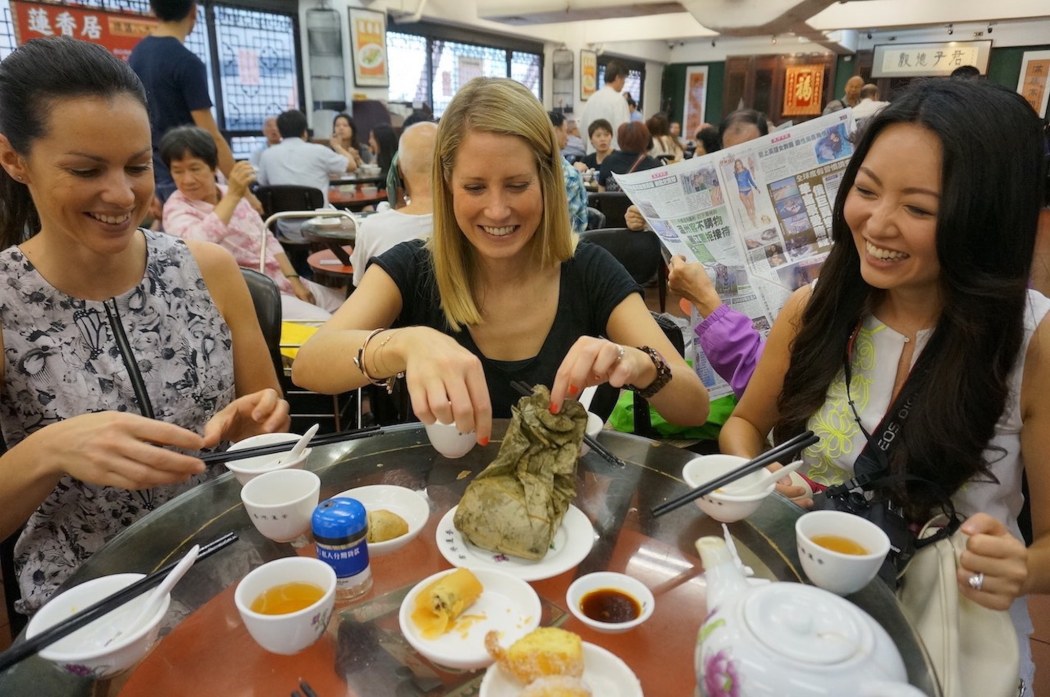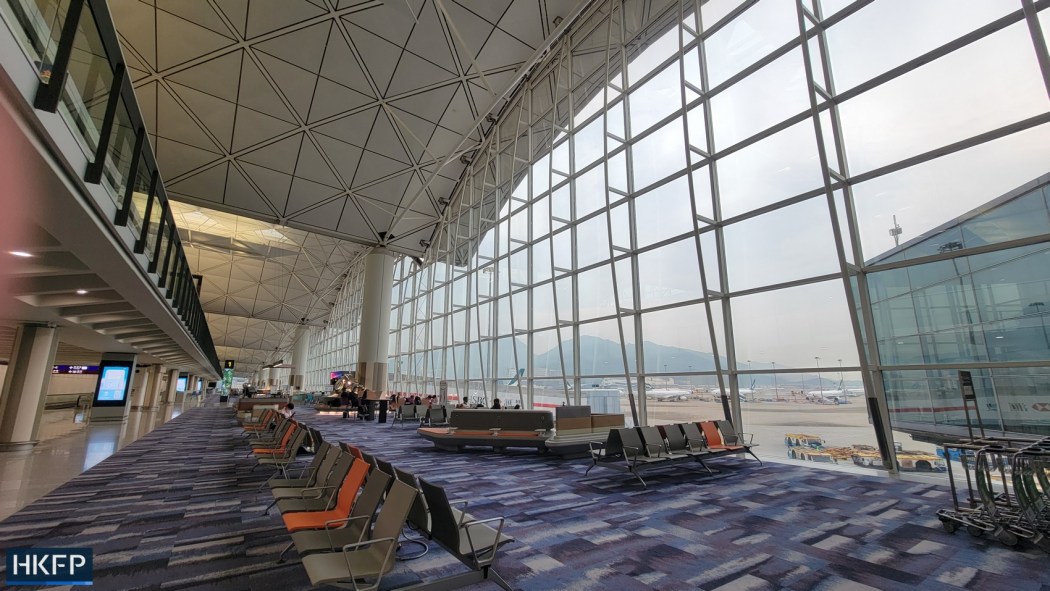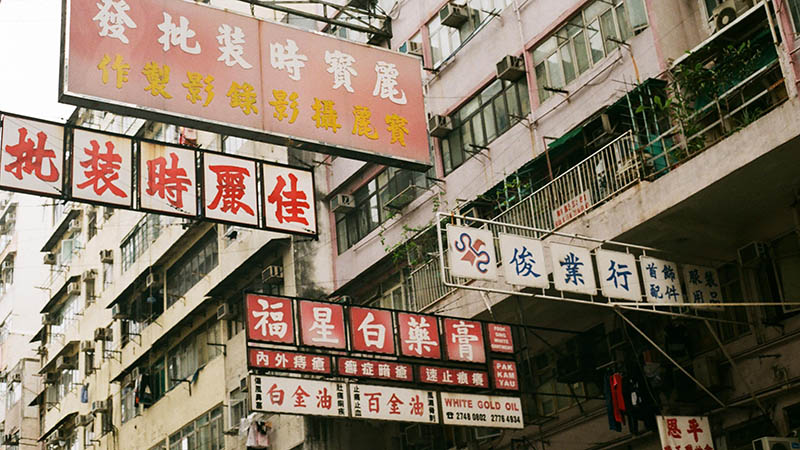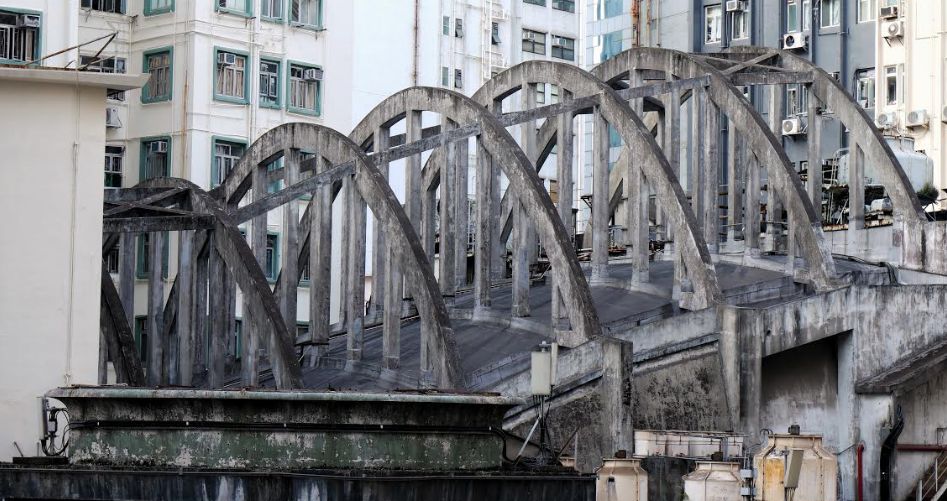On March 25, 2020, two weeks after the World Health Organization declared the outbreak of Covid-19 a pandemic, Hong Kong sealed itself off from the outside world.
It stayed that way for much of the following three years, until early very recently, when most restrictions on border crossings between the city and mainland China were lifted. As of February 6, Hong Kong tourism has been back in business – or so officials would have us believe.

Certainly, recent arrival figures have been promising, even if February’s much-touted 1.4 million visitors were just a quarter of pre-pandemic levels. But it is not good news across the board. For those who rely on arrivals from long-haul markets to make a living, business is far from back.
“Right now, I don’t see many people who are purposefully travelling to Hong Kong,” tour guide Jacky Wong told HKFP. “They are not coming back.”
Wong started showing people around the city in 2010, setting up his company, This is Asia Tours, in 2016. It caters to tourists “from the United States, Europe – basically English-speaking countries.”
“It is improving,” Wong said of the inbound tourism industry. “There has been an increase in interest since the border opened, but right now we are seeing that flight tickets to Hong Kong are still very limited.”

According to provisional figures from the Hong Kong Airport Authority, there were 10,665 passenger flight movements in January, compared with some 31,000 in January 2019. In a March 16 statement, the city’s flagship carrier Cathay Pacific assumed an upbeat tone. It had carried 1.1 million passengers the previous month, it said, an increase of 3,467 per cent compared with February 2022.
But that was just 39 per cent of February 2019 passenger traffic. “By the end of March, the Cathay Group will be operating approximately 50% of pre-pandemic passenger flight capacity, covering more than 70 destinations,” the statement read.
Furthermore, of February’s 1.4 million visitor arrivals, only 75,628 came from long-haul destinations. More than a million came from mainland China, which has long been the city’s largest source market, swollen by those who cross the border for the day – some for sightseeing, others for shopping. Since reopening, Hong Kong has seen a resurgence of low-cost “forced-shopping” tours, according to local media reports.

Industry insiders have said that regional airlines are struggling to ramp up flights in what was once an Asian aviation hub. Staff shortages, as well as fee hikes of 30 to 100 per cent among ground handling companies, have dented Hong Kong’s appeal, they said in January.
‘Is Hong Kong safe to visit?’
Not only is the city contending with the ramifications of three years of Covid restrictions – which stayed in place long after regional rivals such as Singapore or Bangkok had emerged from coronavirus confinement – it also made international headlines in 2019 for months-long pro-democracy protests that saw sometimes-violent scenes beamed around the world.
“[Demand] has been very slow to pick up. Much slower than in other countries,” tour guide Laura Blackhall told HKFP.

Originally from the UK, Blackhall moved to Hong Kong in 2011, later leaving the corporate job she had relocated with to set up Hello! Hong Kong in 2013, running small group and private tours for mostly Western tourists around her adopted home.
“During the protests we received a lot of cancellations,” Blackhall said. “We also received a lot of emails from people with bookings asking if it was safe to visit… Those that still came were, on the most part, completely unaffected by the protests, but huge numbers of people simply didn’t come given the perceived risk.”
The protests were put down in 2020, partly by stringent social distancing measures that prevented groups from gathering and partly by the enactment of a security law that June, under which swathes of opposition figures were detained.
Then, by March of that year, international arrivals were shut out of the city. And once they were allowed back in, Blackhall said she was again fielding inquiries from overseas about the risks associated with visiting.
“The ongoing anti-epidemic measures have resulted in people questioning: is Hong Kong safe to visit?” she said. “That means safe from a health perspective and also from a ‘what’s going to happen to me if I test positive or accidentally break a rule’ perspective.”

Type “Is Hong Kong” into Google today, and one of the search engine’s first predictions for how users may want to end that sentence is with the word “safe.” Inquiries about safety also crop up often on the city’s Reddit forum.
Although all pre-departure and post-arrival testing requirements for arrivals were removed on April 1, the coronavirus situation still frequently comes up in questions Blackhall gets asked by customers.
People wonder about any lasting measures, why so many still wear masks, and whether there have been any long-term behavioural changes as a result of the pandemic. Another common question, she said, was how Hongkongers had survived such stringent measures and the economic fallout.
Blackhall survived on savings, money she had put away for her eventual retirement. “It has been extremely difficult,” she said.
As for Hello! Hong Kong, “all of the tour guides have taken other jobs,” Blackhall said. One has returned to the company, but “the others have not.” The company is currently hiring.
Wong was more euphemistic about how This is Asia Tours kept going during Covid, simply saying that it “cut costs.”

The impact of cost-cutting and career changes is likely to be lasting, though, with the sector facing “a manpower shortage,” as Ricky Tse of the Travel Industry Council put it during an RTHK radio interview on March 16. The Travel Industry Council declined to be interviewed by HKFP, saying it “could not arrange for the interview this time.”
During Covid, the government told tourism professionals to retrain and find employment in other industries, and, Blackhall said, many of them did. As a result, “Hong Kong now faces major labour shortages in tourism,” she continued, adding that her staff were “reluctant to return to what is now a risky industry. What if something else happens and they are not safeguarded again?”
Paul Chan, co-founder of Walk in Hong Kong, whose small group and private walking tours strive to tell lesser-known stories of the city, agreed that the lack of flights and personnel were problems for the industry’s recovery. “It is very difficult to find guides,” he said, “quite a lot of them simply changed jobs.”
Thanks to what Chan called “a balanced portfolio” – a pre-existing mixture of local and international clients – Walk in Hong Kong weathered Covid relatively well. Hongkongers, historically well-travelled, “turned to local itineraries” when they couldn’t go overseas, “and we somehow benefited.”

Walk in Hong Kong also ran online, live-streaming tours. “And it did pay off,” he said. “We’re actually expanding our team and we were expanding our team during Covid times. We kept all the guides, which is very crucial for recovery.”
But Chan said that, while demand from the local market continued, calls from abroad were slower to rebound. “Honestly, overseas, not yet… we have started to get inquiries,” he said. “The recovery won’t be very imminent. I would say it will definitely come back, but a more full recovery would only happen next year.”
‘Hello Hong Kong’
The government is doing its bit to put Hong Kong back on the map for international tourists, giving away half a million plane tickets – not quite for free – as part of its “Hello Hong Kong” drive.
A Hong Kong Tourism Board (HKTB) spokesperson told HKFP that the “global promotional campaign… was launched on 2 February to send a message to the world that Hong Kong is now back to normal and welcomes back visitors.”
The HKTB was investing “at least” HK$100 million to promote Hello Hong Kong at home and abroad, the spokesperson said. The initial phase of publicity had reached 100 million viewers as of the end of February and resulted in more than 4,000 media clippings in major media outlets worldwide, according to the Board.
“It has certainly done a great job in bringing attention back to Hong Kong,” Blackhall said. “People all over the world have heard about this campaign and there has been a huge amount of interest in it.”
Despite this, Blackhall said she had “mixed feelings” about it – not least because it shared a name with her company “and as you can expect, people think that we are the ones running the campaign.”
“We have been inundated with emails from people ‘applying’ for the free flights. A very large percentage of the people are telling us they can’t afford to pay for a flight at the moment and that is why they want to win one. And this is why I have mixed feelings: it’s not a very sophisticated campaign and it will not have a long-lasting benefit.”
Blackhall said she “would have liked to see a multidimensional campaign that was more focused on what Hong Kong has to offer as a city and on the people of Hong Kong… Hong Kong people have such a vibrant, tenacious spirit. I personally would have liked to see a campaign which showcased that, alongside some of the unique and heritage aspects of the city.”
“I think people are more discerning in their decision-making when it comes to choosing a holiday destination than this particular campaign gives them credit for,” she said, adding “but as I said it has still generated a big buzz, which is great.”

Chan also expressed ambivalence about Hello Hong Kong. “I think it’s necessary… but it probably needs something more,” he said. “Whether your city is attractive enough is the most important or the most determining factor.”
“For your city to attract tourists, you need to do some soul-searching to know what is its core cultural essence, to know what really defines your city, what makes your city so unique and different from other cities,” Chan said. “We should rely on our core cultural essence to attract people instead of… milk powder and cosmetics. Cosmetics and powder, they won’t tell Hong Kong stories.”
Put quite simply, Chan said: “Keeping heritage is one of the ways to save the tourism business in Hong Kong.”
“In London, you won’t knock down Big Ben and build a high rise… but in Hong Kong, that’s exactly what we have been doing.”
Chan and Walk in Hong Kong were instrumental in lobbying for Grade 1 listed status for the State Theatre, a mid-century cinema in North Point that was in danger of being demolished. Thanks to its elevated conservation status, the theatre is currently undergoing renovation as property giant New World Development constructs a high-rise residential and commercial complex around it.

Expected to be completed in 2026, New World Development CEO Adrian Cheng said in a statement in April 2021 that it would return “as a culture and arts landmark with more riveting stories to tell.”
“The State Theatre – with its glorious history and its strong connection to the community – it deserved a chance to be a cultural highlight in Hong Kong,” Chan said. “So then we keep our heritage, we keep our memory, but it’s not only about looking back, it’s very forward-looking. With the right intervention, and with the right conservation efforts… when people come to Hong Kong, it can be an attraction.”
Redevelopment, however, still threatens some of Walk in Hong Kong’s most popular tours. One, a wander through Kowloon City “where we combine the history of Kowloon Walled City with a food adventure in the neighbouring streets,” also suffered as a result of the coronavirus. “Before Covid that was hugely popular, but during Covid, most of the food spots we visited closed down,” Chan said. “We visited six stores and four of them closed.”
Besides businesses that did not survive the pandemic, Kowloon City is also the subject of an Urban Renewal Authority development scheme to build a “liveable and walkable community.” Colloquially known as Little Thailand, local media reported that residents were worried that the soul of the area would be erased.

“Even before the redevelopment, [Kowloon City] had already undergone [a transformation]. Partly because of Covid and the impact on local businesses, and secondly because of the MTR… it has become more and more accessible – which is a good thing – but the other point is the rent, and then there’s a pull factor for other developers,” Chan said.
“We can’t really stop it, we can only accept it, but it’s quite… frustrating for us to rely so heavily on these authentic local scenes that are really vulnerable to these external changes.”
Blackhall, too, expressed frustration. “We’ve lost some of the main attractions of Hong Kong, Jumbo being one of note. Why that was not preserved as a cultural icon is beyond me.” The floating restaurant met a watery demise somewhere in the South China Sea as it was being towed to Cambodia after closing during Covid.
“Iconic restaurants, neon signs, generations-old stalls are all being wiped out. This loss of heritage will certainly negatively impact Hong Kong’s appeal,” Blackhall said. In the space of a few years, much of the city’s postcard-perfect neon heritage has been dismantled in the name of safety.

“That said, it’s not too late, Hong Kong still has a lot going for it,” she added. “It is a city that people want to visit and I hope to see some smart ideas for encouraging not only tourists back to the city but workers back to the tourism industry.”
Chan agreed: “We are at the end of the tunnel. We can see the light.”
Correction 9.4.23: A previous version of this article incorrectly stated that all arrivals must produce proof of a negative Covid-19 rapid test result to enter Hong Kong. In fact, all pre-departure and post-arrival testing requirements for arrivals were removed on April 1. We regret the error.
Support HKFP | Policies & Ethics | Error/typo? | Contact Us | Newsletter | Transparency & Annual Report | Apps
Help safeguard press freedom & keep HKFP free for all readers by supporting our team

LATEST FROM HKFP
HKFP has an impartial stance, transparent funding, and balanced coverage guided by an Ethics Code and Corrections Policy.
Support press freedom & help us surpass 1,000 monthly Patrons: 100% independent, governed by an ethics code & not-for-profit.











